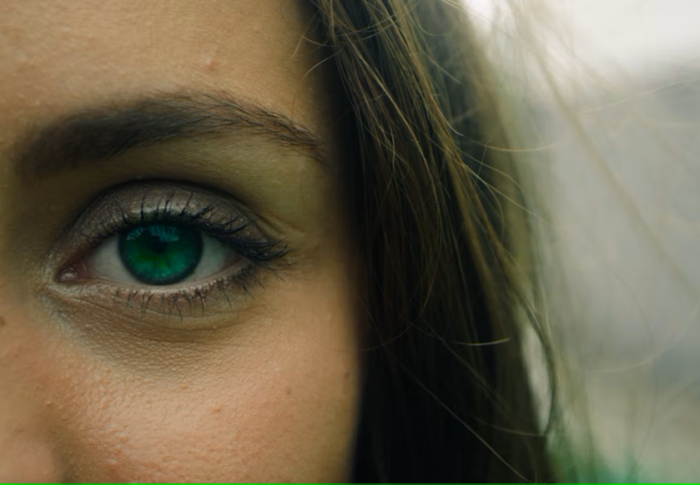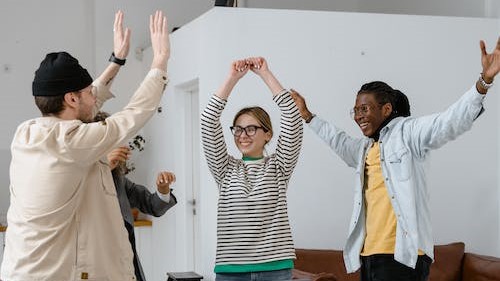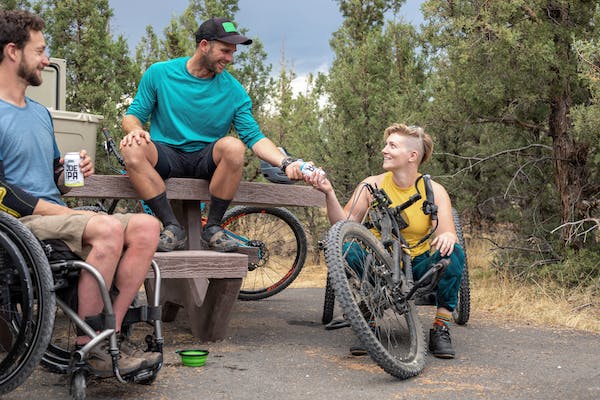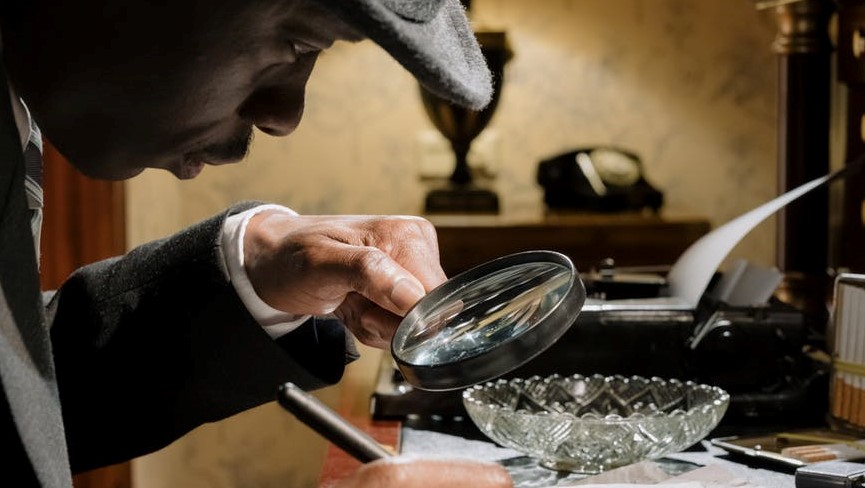
How do we view disability?! A closer look!
This blog has been a long time coming. I’ve not addressed it head on because I’ve found it hard to talk about exactly what my disability is and therefore not really felt as though I can talk about this subject in a cohesive manner.
I’m going to walk through a few models of disability; often we don’t even realise the way we view disability can have a huge impact.
Medical model
The medical model of disability states that if a person has a disability, this is a problem and medicine has the answer. Medicine has been around for hundreds of years, striving for answers, to cure people of their ills. This model means people are excluded from ordinary obligations of society, they are viewed as deficient or faulty. It reinforces stereotypes and puts the onus on doctors to make the sick/ill/disabled person as close to the “normal” population as possible.
You, as the disabled person are allowed to be positioned in the ‘sick role’ provided you engage in therapies/treatments designed to aim for cure.
Since many illnesses or disabilities can’t be cured, this model falls short. An amputee may have a prosthesis but what if it doesn’t really work very well, their residual limb is too sore to wear it for a few days/months or they’re simply happier not wearing it?
What if your disability varies from day to day? The medical model only work with certain illnesses and the labels (diagnoses) are used in order to find a cure.
The medical model of disability is why people struggle with the concept of an ambulatory wheelchair user—”surely, if someone is sick, then they’re sick”. Holding onto the medical model (and shame from internalised ableism) can be the cause for someone with a chronic pain condition to feel they “should push through” their pain—it can prevent people using mobility aids and/or medication that would reduce pain.
Social model
The social model of disability places the responsibility firmly in the lap of society to accommodate everyone, no matter what their needs.

I recently heard of a disabled lady being denied a pizza delivery. She lived within a compound and needed the pizza bringing to her door. Company policy meant they delivery driver could only drop the pizza at the outer door.
The medical model of disability would say this is the customers problem—they need to look for ways to get better so they can pick up their pizza from the outer door. The social model of disability accepts the customer as she is and finds a way to accommodate her needs. It may only be take-away pizza but, it’s the principle that matters—why should her neighbour be able to enjoy pizza just because they can collect it from the outer door but this disabled customer can’t?!
Adjustments made for the disability community often benefit everyone. It’s called “the curb cut phenomenon”—dropped curbs were built for wheelchairs but now they used by skateboarders, people pushing buggies/prams or anyone dragging a suitcases. Texting was originally invented for the deaf community but can you imagine your life without texting now?!
If the pizza company changed their policy so they asked the customer to where they needed their pizza delivered, everyone would benefit.
Tragedy/charity model
The tragedy/charity model of disability assumes that when someone is sick they are incapable of looking after themselves. The disabled community are to be pitied; if they manage anything, they are then icons of inspiration. Using this model, employers often believe charitable giving meets their social and economic obligations (rather than employing disabled individuals and making accommodations).
The care sector has grown out of the tragedy model. There can be an imbalance between dependence and independence when care is provided in a one-size-fits-all format.
For example, a carer may have 10 minutes to help a disabled person get up and dressed in the morning before they need to move onto their next patient/client/service user. In this 10 minutes it will be quicker to do everything for the disabled person, rather than support the person to do their ADLs themselves.
Religious/cultural model

There are many cultures around the world that believe sickness and/or disability is a punishment. It can be due to misdemeanours committed by the disabled person, someone in the family or community group, or forbears. Birth conditions can be due to actions committed in a previous reincarnation.
Sometimes disability stigmatises a whole family, lowering their status or even leading to total social exclusion. Conversely, sometimes, these “hardships” are considered necessary in order to gain some future spiritual reward.
Many disabled people struggle with understanding how an omnipotent “god” could inflict such difficulties upon them. This comes when there is a search for meaning. Many, however, are content with who they are and feel no need to find reasons—this can come with a confidence in their identity.
I don’t believe God is punishing me or caused my disabilities/illnesses but I believe he’s with me in my pain.
Biopsychosocial model
While the medical model focuses on impairments, the social model sees disability as caused by social exclusion and discrimination and the tragedy/charity/religious/cultural models view disability as something to be judged, the biopsychosocial model sees an interaction between 3 sets of factors:
- Physical factors, such as age, gender, genetics (the biological makeup of the individual)
- Psychological factors, such as behaviour (of the individual and society)
- Social factors, such as the environment (and belief systems that impact the environment)
The biopsychosocial model sees the other models as incomplete. It views the whole situation, from the point of view of the individual and society. Using this model means, integration into society is the responsibility of all.
This model helps people with disabilities to take responsibility for themselves while society makes adjustments.
For example, when on strong painkillers it is up to the individual to know how they’re affected, it is their responsibility to only drive if 100% safe to do so. There is a law (in the UK) that targets dangerous drivers who are impaired after illegal or abusive use of drugs. However, people who are taking the medication as prescribed (and it doesn’t impact their ability to drive) will not be charged, even if their level of controlled drug is above the specified level.
My thoughts and reflections
I have recently spoken about my autism, this is a neurodevelopmental disorder that cannot be cured. Most people with it don’t want to be cured, they are autistic, just as they are a red head or female, for example

I asked for adjustments in my last workplace but I was stuck in the basement because “out of sight out of mind” felt the best option for them… leaving was the only option for me! Apparently an occupational health assessment only provides recommendations that do not need to be applied.
What protection is there?
In the UK, The Equality Act is designed to protect people from discrimination in the workplace and the wider community. In the US this is The Americans With Disabilities Act. While it’s important to have it written into law, it is difficult to uphold because once you’re experiencing discrimination, you feel, very much, like a little person against some faceless big company.
I used to think I just found life difficult because I was the problem (I just thought I was a werido who couldn’t cope with things everyone else found easy). Now I know what the issue is, my brain is wired differently and it’s not my fault, I’m more ready to stand up for myself (and others).
But does it really matter?
The fact that my disability doesn’t impact me at home is the definition of the “social model of disability”. I’m sure there are many people reading this quietly sighing from a position of privilege and may even wince at the sight of that word. (If you’ve read this far) you may be thinking things like “life isn’t fair” or “it’s a generational thing”.
What isn’t fair is that 68% of autistic people are un-employed (compared to 20% of non-disabled people). Of the 32% who are employed, many are under-employed (i.e. not using skills and experiences they have or they have a desire for more hours). This isn’t because we’re lazy (as we’re often called), far from it, research shows autistic people want to work but it’s simply inaccessible.
Workplaces that hold onto a medical model (“it’s up to the health system to sort it out”) or charity model (“we can pay a charity to do some good work in that area”) of disability have no intention of making adjustments.
60% of employers worry about getting support for autistic people wrong but they same number don’t know where to go for support and advice about employing an autistic person. Find out more about autism and employment in this report from the National Autistic Society. Here are a couple of simple options:
- Enna is a (UK based) company that help autistic people into work and also helps companies to employ autistic people
- The National Autistic Society run an Autism At Work Programme that provides support to autistic people looking for work as well as recruitment support, training and workplace support and resources for employers.
People shouldn’t be viewed purely for their productiveity
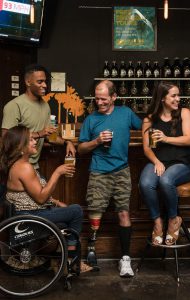
While the workplace has been where I’ve experienced problems, it’s important to remember that not all disabled people can work. It can be easy to fall into the charity or religious model of disability if we’re not able to measure someone by their “productivity”. But we don’t have to, I feel these models are limiting and patronising.
Valuing a human being for who they are can be a difficult concept for some people. When most people think “who am I?” they name various roles such as “parent”, “lawyer”, “receptionist”, “friend”. If you dig a little deeper, people might come up with “caring”, “generous”, “kind”, “friendly”. But all these are what a person is not who they are! If you care for and love someone for who they are, this means you sincerely appreciate them, just as they are and have no desire to change them.


